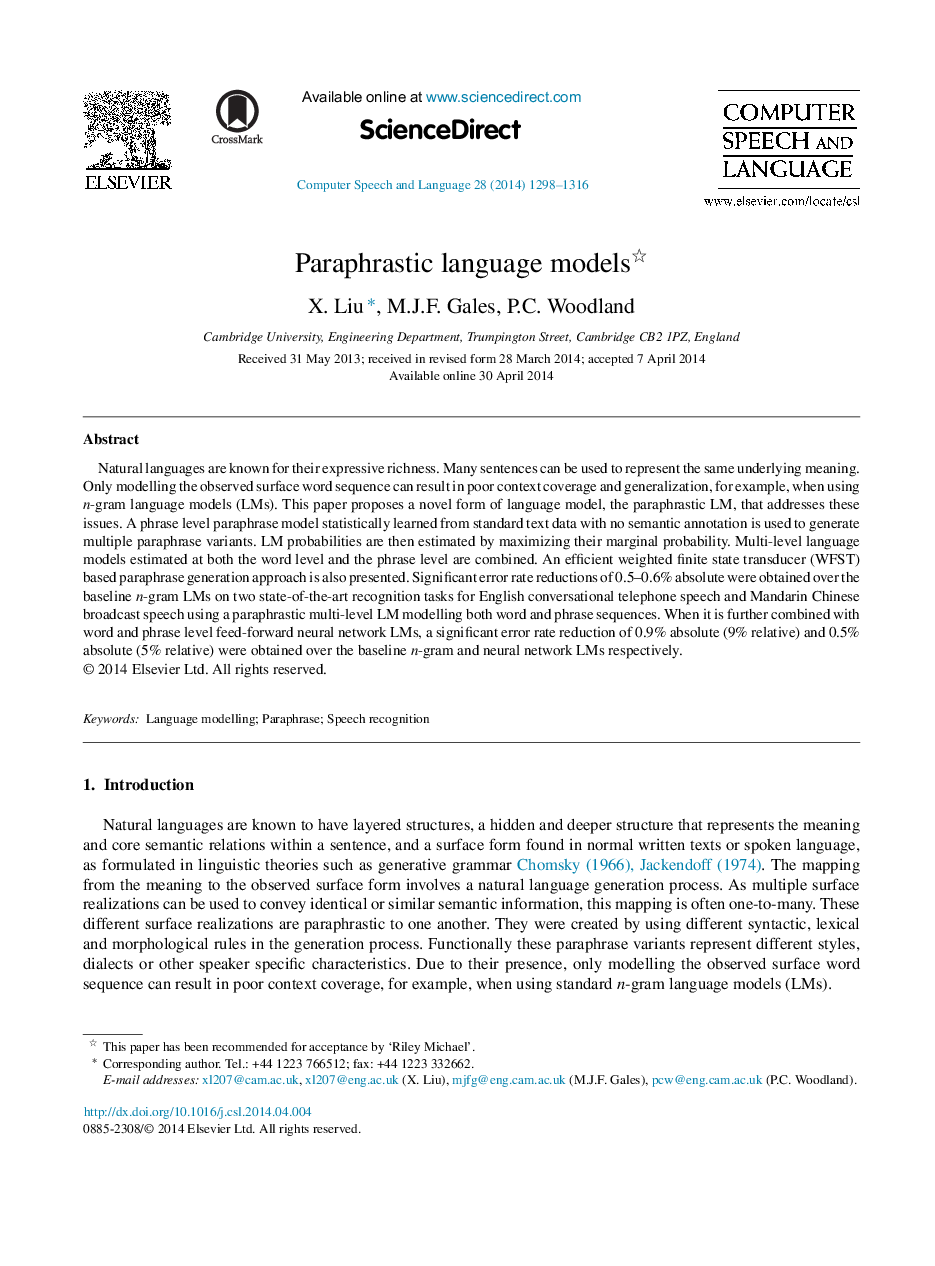| کد مقاله | کد نشریه | سال انتشار | مقاله انگلیسی | نسخه تمام متن |
|---|---|---|---|---|
| 559025 | 875034 | 2014 | 19 صفحه PDF | دانلود رایگان |
• Paraphrastic language models proposed.
• Statistical paraphrase learning from standard texts.
• Improved LM context coverage and generalization performance.
• Combination with word and phrase level neural network LMs.
• Significant error rate reductions of 5–9% relative.
Natural languages are known for their expressive richness. Many sentences can be used to represent the same underlying meaning. Only modelling the observed surface word sequence can result in poor context coverage and generalization, for example, when using n-gram language models (LMs). This paper proposes a novel form of language model, the paraphrastic LM, that addresses these issues. A phrase level paraphrase model statistically learned from standard text data with no semantic annotation is used to generate multiple paraphrase variants. LM probabilities are then estimated by maximizing their marginal probability. Multi-level language models estimated at both the word level and the phrase level are combined. An efficient weighted finite state transducer (WFST) based paraphrase generation approach is also presented. Significant error rate reductions of 0.5–0.6% absolute were obtained over the baseline n-gram LMs on two state-of-the-art recognition tasks for English conversational telephone speech and Mandarin Chinese broadcast speech using a paraphrastic multi-level LM modelling both word and phrase sequences. When it is further combined with word and phrase level feed-forward neural network LMs, a significant error rate reduction of 0.9% absolute (9% relative) and 0.5% absolute (5% relative) were obtained over the baseline n-gram and neural network LMs respectively.
Journal: Computer Speech & Language - Volume 28, Issue 6, November 2014, Pages 1298–1316
